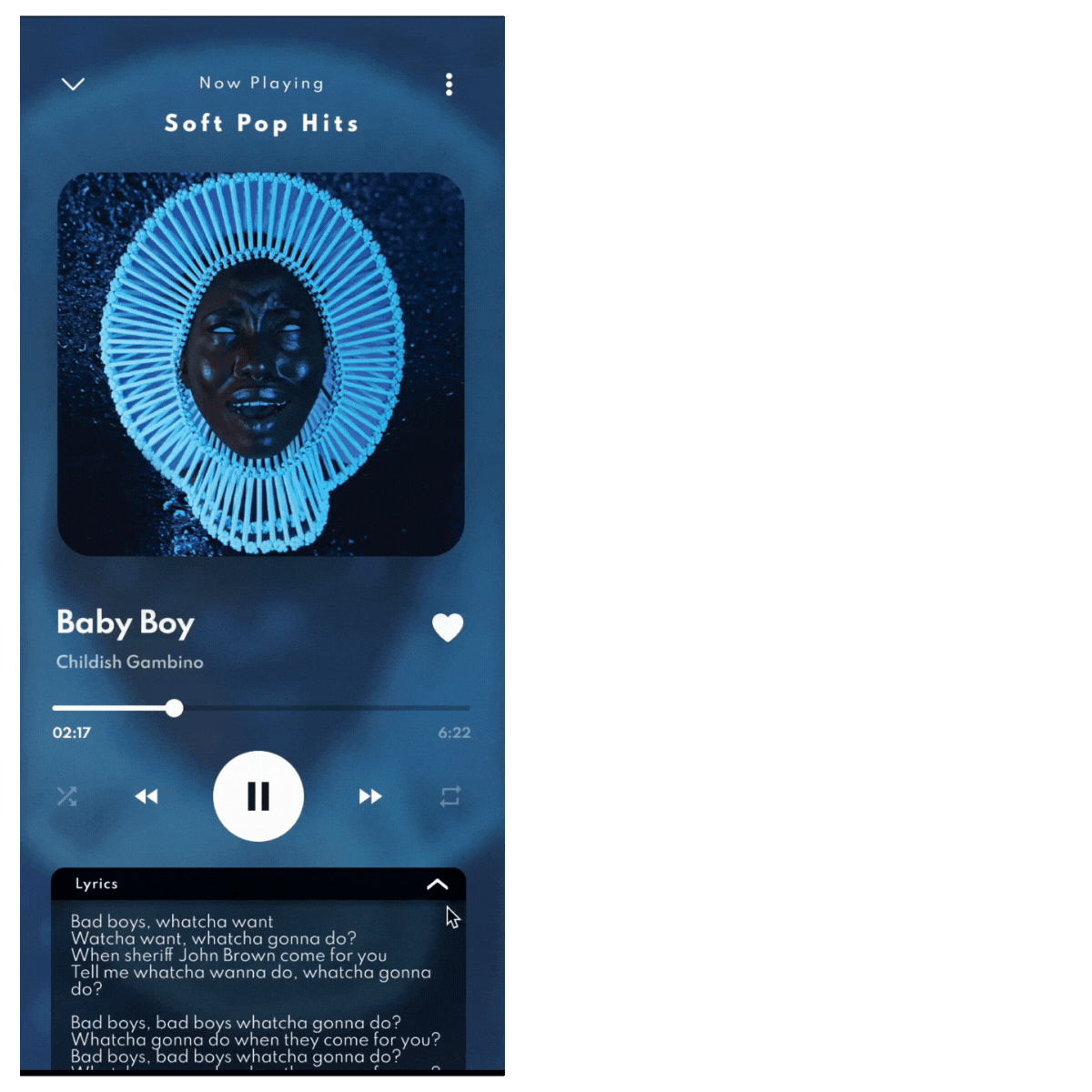Project Overview
As a part of the Accenture North America Product Design Virtual Experience Program, I embarked on a self-driven project aimed at transforming the user’s experience by adding new features and iterating on an existing product screen. This program offered me a glimpse into the dynamic environment of a Product Design team at Accenture, allowing me to apply my design skills in a practical, real-world context.
In this project, I took on the role of a Product Designer, focusing on the enhancement of user experience through thoughtful design decisions.
My responsibilities included:
In our music app, users were frequently leaving the app to look up song lyrics on other websites. This was frustrating and broke their music experience. Our goal was to keep users engaged within our app by providing the lyrics directly alongside the music.
Our main users are music lovers, especially those aged 15-35. They enjoy singing along to their favorite songs and want an immersive experience. They need easy access to lyrics without having to leave the app.
To address the problem, I conducted extensive research, including:
These research activities provided critical insights that shaped the design solution.
The design process was iterative and collaborative, involving multiple stages of refinement:
The previous design required users to leave the app to look up song lyrics, disrupting their experience. The new design integrated lyrics directly within the app, providing a seamless and immersive experience. The lyrics were easy to read, perfectly synced with the music, and accessible without leaving the app, significantly enhancing user satisfaction.





Throughout the project, I encountered several challenges:
To overcome these challenges, I leveraged critical thinking and problem-solving skills, ensuring that each design decision was well-informed and strategically sound.
The project culminated in a refined product screen with an added feature that significantly enhanced the user experience. Key outcomes included:
This experience was invaluable in honing a range of skills essential for a successful career in product design:

Participating in Accenture’s virtual experience program confirmed my passion for product design and provided a solid foundation for pursuing a career in this field. The hands-on experience of adding features and iterating on product screens, coupled with the opportunity to develop critical design skills, was both rewarding and enlightening.
This project not only demonstrated my ability to enhance user experiences through thoughtful design but also highlighted my commitment to continuous learning and improvement in the field of product design. I am excited to continue exploring this path and contributing to innovative design solutions in the future.
© 2024 Created by Abdul Moiz Qadir